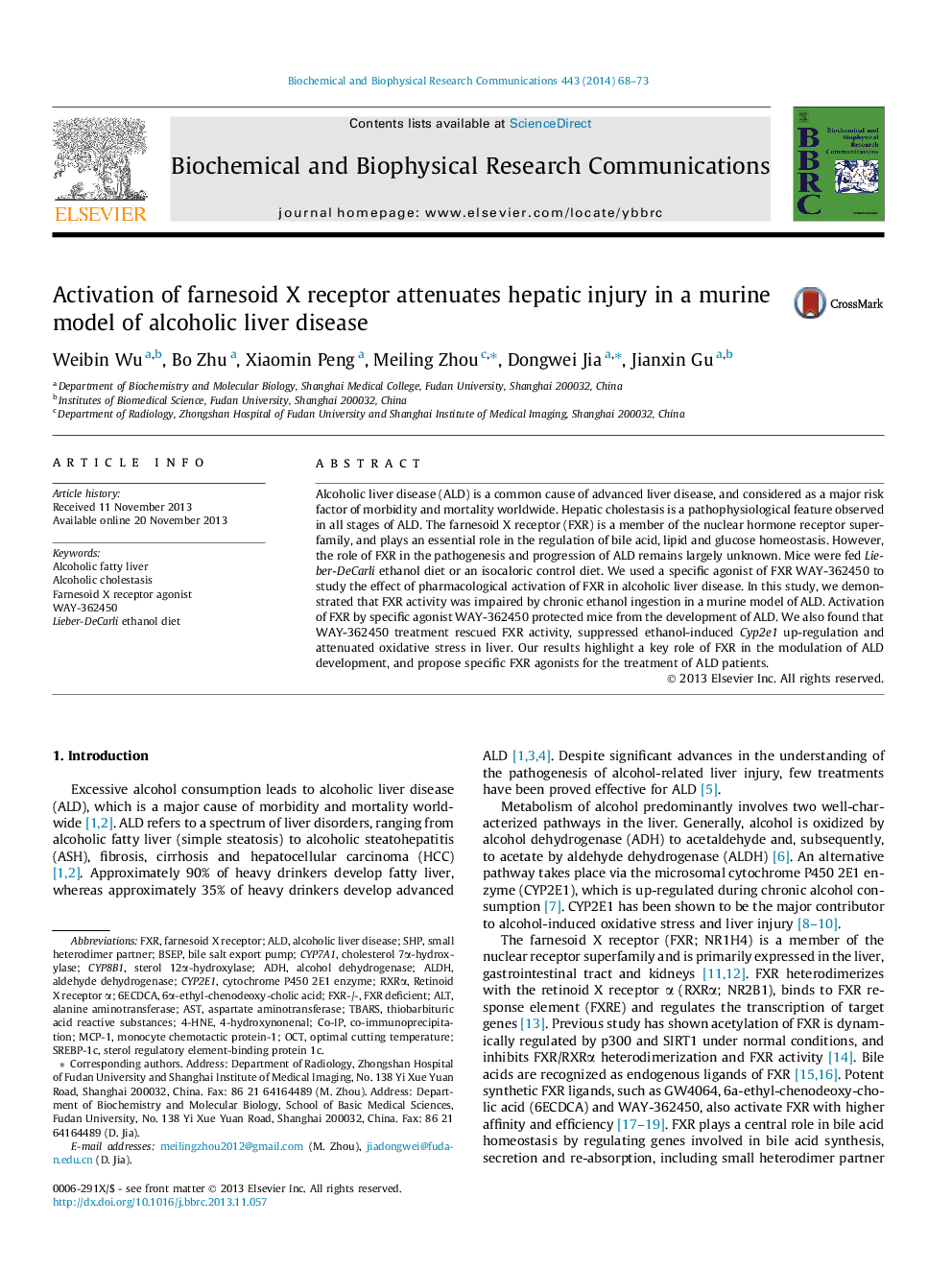| Article ID | Journal | Published Year | Pages | File Type |
|---|---|---|---|---|
| 10757354 | Biochemical and Biophysical Research Communications | 2014 | 6 Pages |
Abstract
Alcoholic liver disease (ALD) is a common cause of advanced liver disease, and considered as a major risk factor of morbidity and mortality worldwide. Hepatic cholestasis is a pathophysiological feature observed in all stages of ALD. The farnesoid X receptor (FXR) is a member of the nuclear hormone receptor superfamily, and plays an essential role in the regulation of bile acid, lipid and glucose homeostasis. However, the role of FXR in the pathogenesis and progression of ALD remains largely unknown. Mice were fed Lieber-DeCarli ethanol diet or an isocaloric control diet. We used a specific agonist of FXR WAY-362450 to study the effect of pharmacological activation of FXR in alcoholic liver disease. In this study, we demonstrated that FXR activity was impaired by chronic ethanol ingestion in a murine model of ALD. Activation of FXR by specific agonist WAY-362450 protected mice from the development of ALD. We also found that WAY-362450 treatment rescued FXR activity, suppressed ethanol-induced Cyp2e1 up-regulation and attenuated oxidative stress in liver. Our results highlight a key role of FXR in the modulation of ALD development, and propose specific FXR agonists for the treatment of ALD patients.
Keywords
Farnesoid X receptor agonistFXRBSEPCYP2E1RXRαRetinoid X Receptor αMCP-1ALTTBARSSHPADHCYP8B16ECDCACYP7A14-hydroxynonenal4-HNESREBP-1cALDHfarnesoid X receptorALDASTAspartate aminotransferaseAlanine aminotransferasealdehyde dehydrogenasesterol 12α-hydroxylaseAlcohol dehydrogenaseOctalcoholic liver diseaseoptimal cutting temperaturesmall heterodimer partnerCo-IPthiobarbituric acid reactive substancesCo-ImmunoprecipitationMonocyte chemotactic protein-1sterol regulatory element-binding protein 1cBile salt export pumpalcoholic fatty livercholesterol 7α-hydroxylase
Related Topics
Life Sciences
Biochemistry, Genetics and Molecular Biology
Biochemistry
Authors
Weibin Wu, Bo Zhu, Xiaomin Peng, Meiling Zhou, Dongwei Jia, Jianxin Gu,
